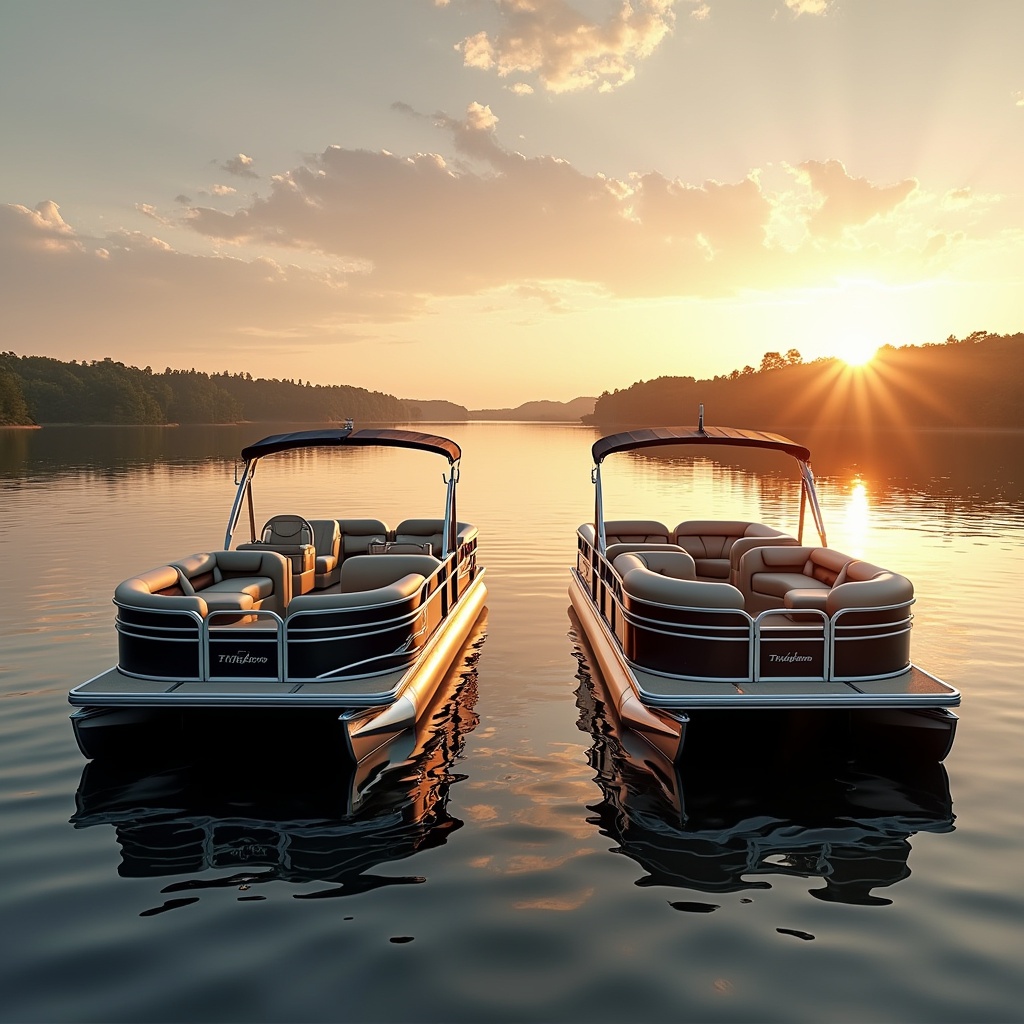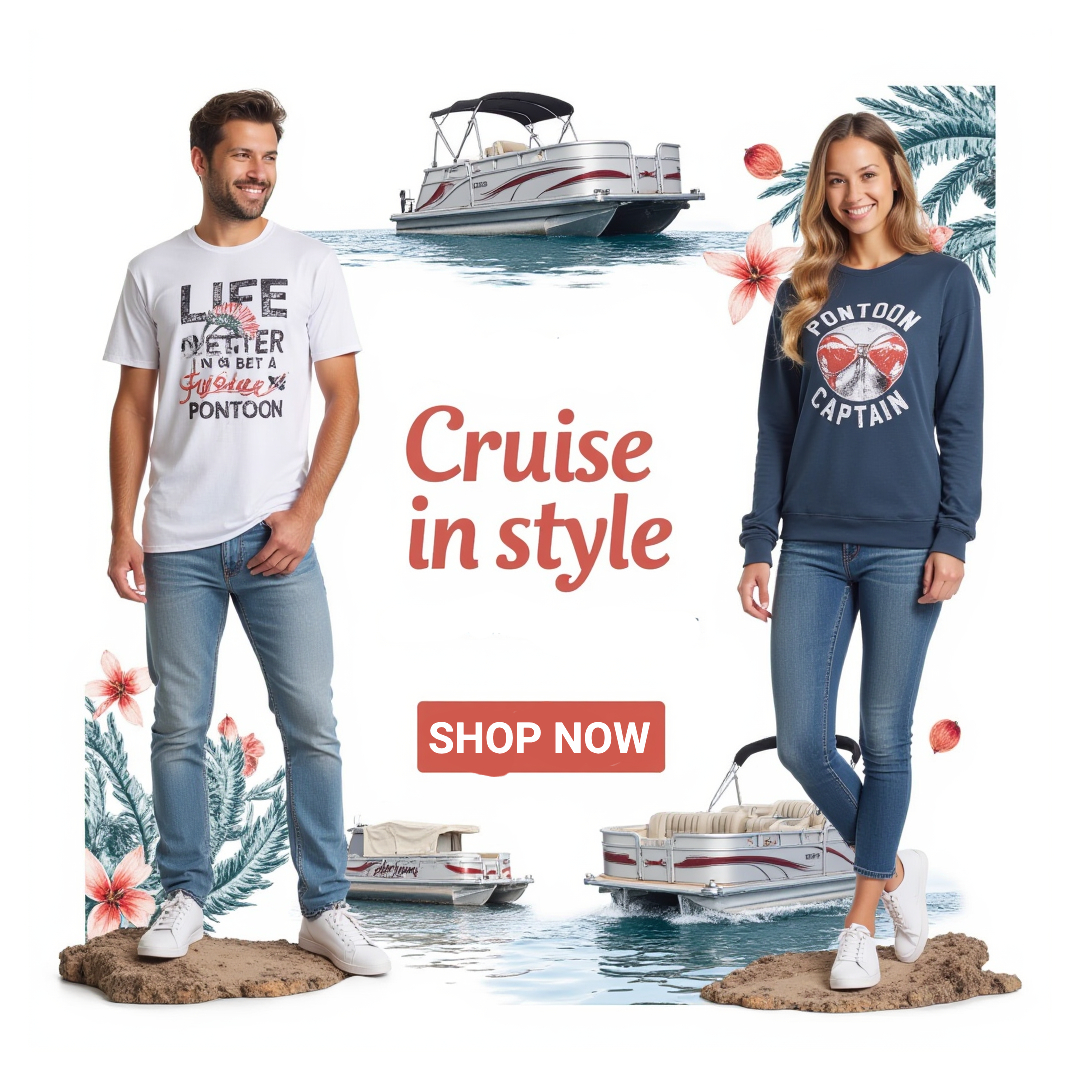Choosing the right boat can significantly impact your time on the water. Two popular options are pontoon and tritoon boats, each with unique features and benefits. This guide will explore the differences to help you decide which type is best suited to your needs.
What is a Pontoon Boat?
- Basic Design: Pontoon boats feature a flat deck mounted on two metal tubes (pontoons) that provide buoyancy.
- Versatility: Ideal for leisurely activities such as cruising, lounging, and entertaining.
- Layout Options: Available in various layouts, including split bench, lounge, sundeck, and fishing configurations.
- Features: Can be equipped with amenities like comfortable seating, tables, entertainment systems, and fishing gear.
- Use Cases: Perfect for social gatherings, parties, and family outings on calm waters.
- Brands: Popular pontoon brands include Avalon, Godfrey, Sylvan, Bennington, Harris, Barletta, Manitou, and Sun Tracker.
- Entry-Level Models: Some brands offer compact, easy-to-maneuver models compatible with electric or gas propulsion.
What is a Tritoon Boat?
- Hull Design: Tritoon boats have a third pontoon in the center, enhancing stability and performance compared to traditional pontoons.
- Performance: Improved handling, higher speeds, and better cornering capabilities.
- Tritoon Packages: Some brands, such as Harris, offer performance-enhancing features like ‘RPM Technology’ to optimize speed and handling.
- Use Cases: Increased stability and horsepower make tritoons ideal for water sports and rougher waters.
- Brands: Many pontoon brands also manufacture tritoon models.
- Configurations: Available in similar layouts as pontoons, including split bench and lounge designs.
Key Differences: Pontoon vs. Tritoon
| Feature | Pontoon Boat | Tritoon Boat |
|---|---|---|
| Hull | Two pontoons, providing good stability and buoyancy. | Three pontoons, offering enhanced stability and performance. |
| Performance | Suited for leisurely cruising and calm waters. | Greater speed and improved handling, suitable for water sports and rougher conditions. |
| Stability | Stable for basic boating activities. | Extra stability, ideal for active boating and larger groups. |
| Cost | More affordable than tritoon models. | More expensive due to the additional pontoon and enhanced performance. |
| Versatility | Versatile layouts for different activities. | Also versatile, with options for relaxation and water sports. |
| Engine Options | Compatible with traditional outboard or electric engines. | Can handle higher horsepower engines for better performance. |
| Best Use | Relaxed cruising, family outings, and fishing on calm waters. | Watersports, high-speed cruising, and rougher water conditions. |
Choosing the Right Boat for You
- Primary Activities: If you enjoy relaxed cruising, social gatherings, or casual fishing, a pontoon boat is a great choice.
- Performance Needs: If you plan to engage in water sports or navigate rougher waters, a tritoon boat is better suited.
- Budget: Pontoon boats are typically more affordable, making them an excellent entry-level option.
- Group Size: Tritoon boats often have a higher passenger capacity and increased stability, making them ideal for larger groups.
- Features: Consider the available amenities, ranging from basic to luxury, depending on your needs.
Conclusion
Both pontoon and tritoon boats offer excellent options for enjoying time on the water. Pontoons are versatile and perfect for leisurely activities, while tritoons provide enhanced performance and stability for more active use. By assessing your needs, budget, and preferred activities, you can choose the perfect boat to maximize your time on the water.






